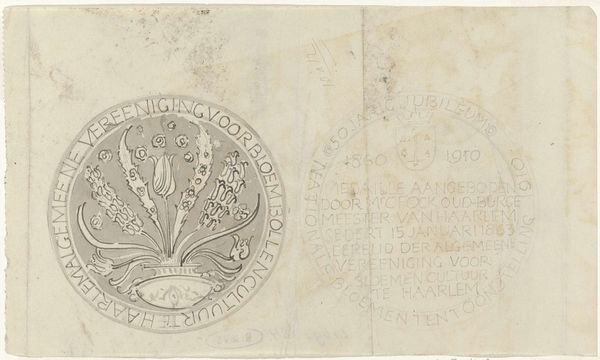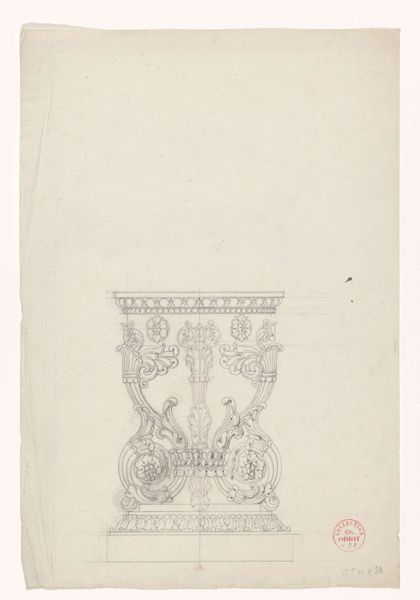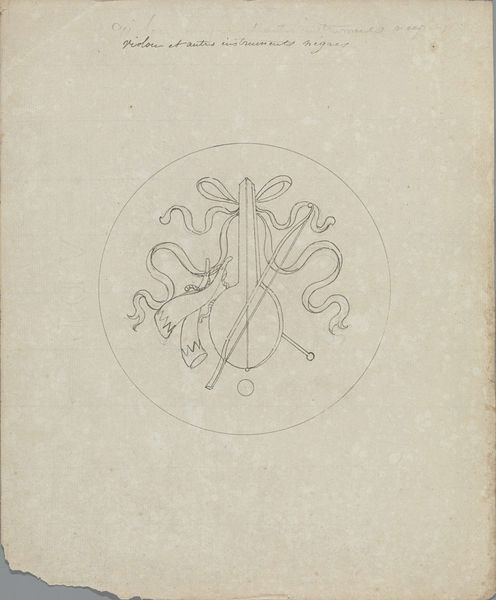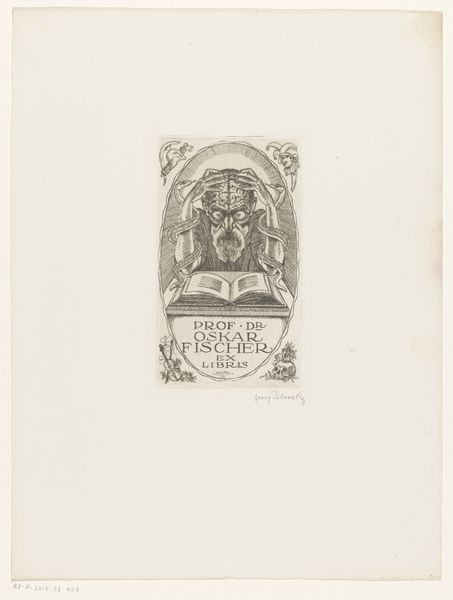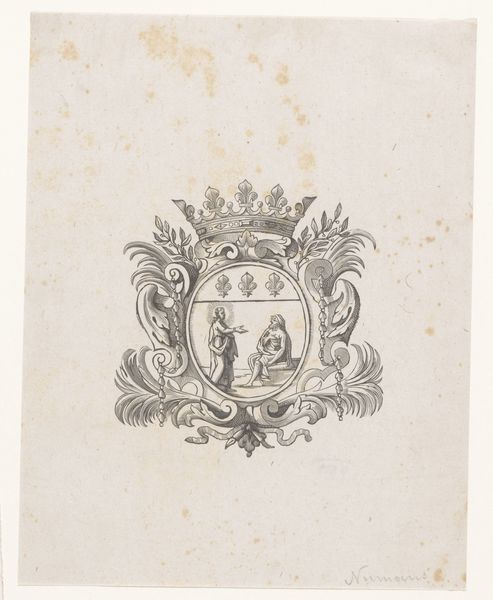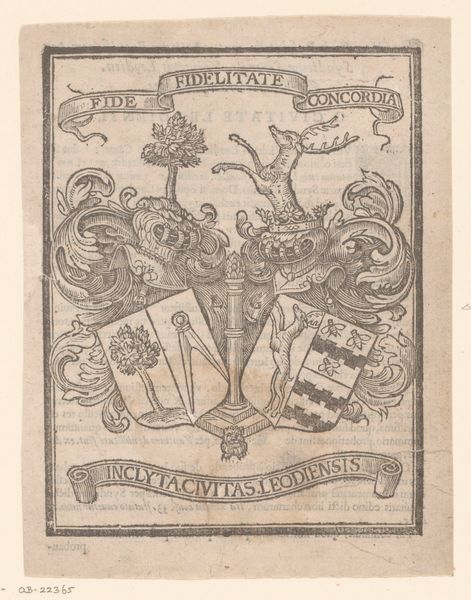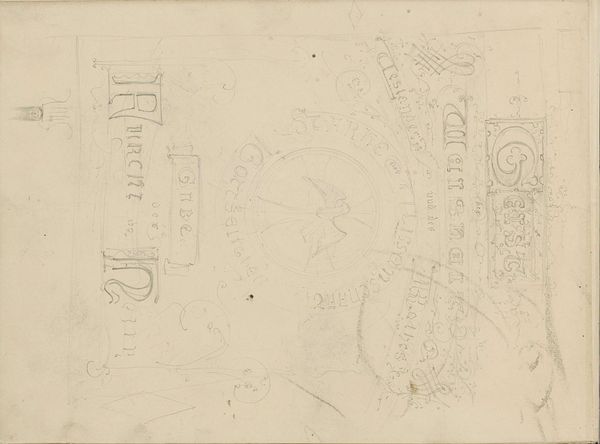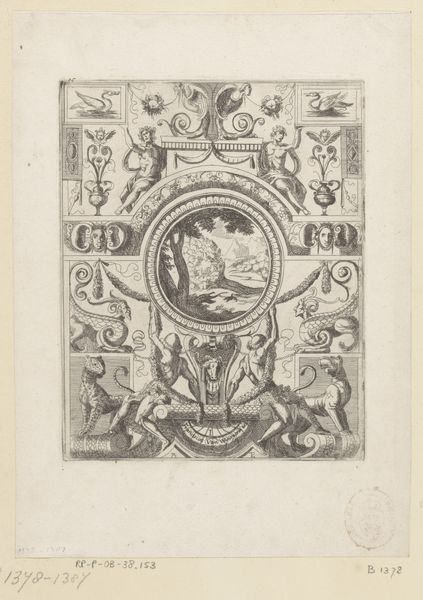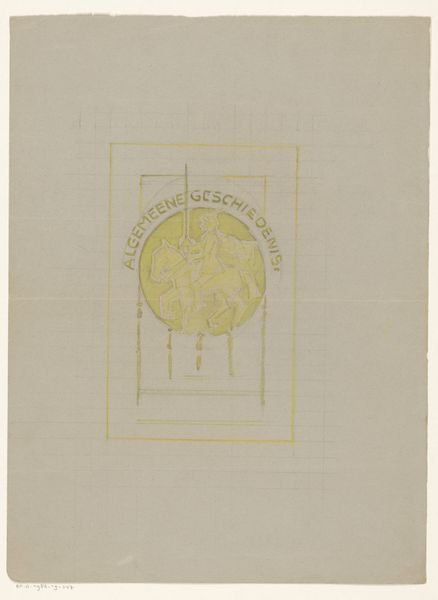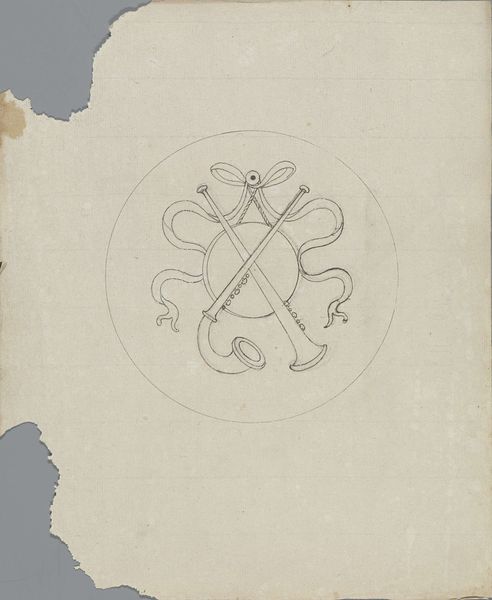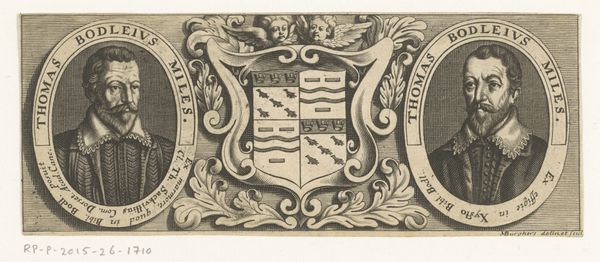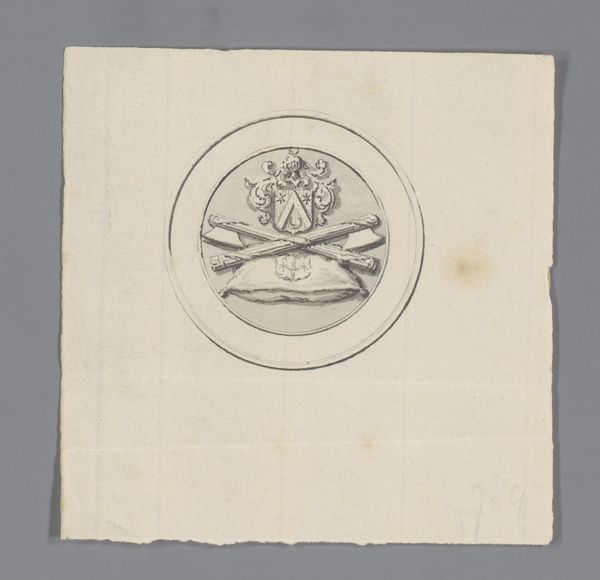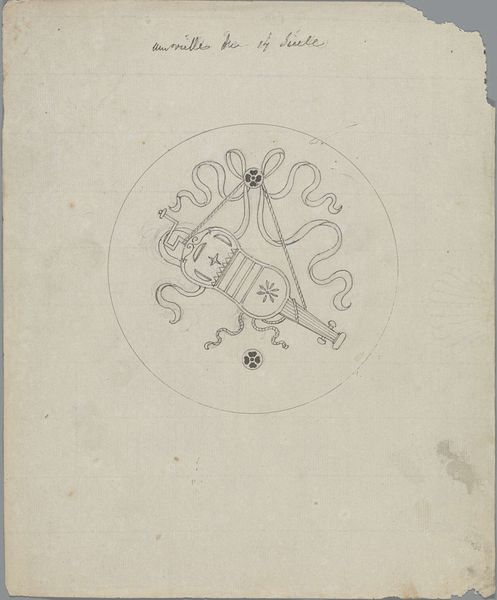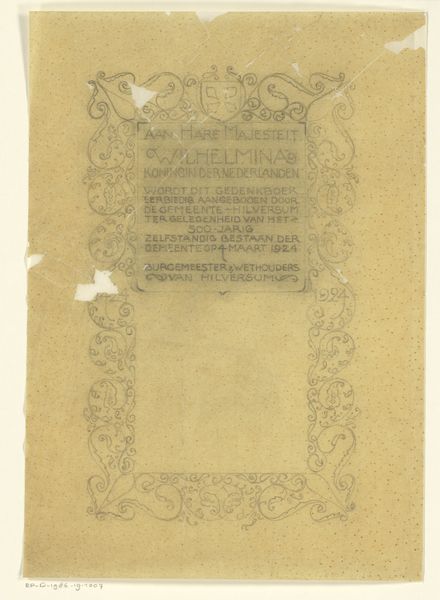
Ontwerp voor een ex libris van Johannes Henoch Neethling 1874 - 1945
0:00
0:00
careladolphlioncachet
Rijksmuseum
drawing, graphic-art, paper, pencil
#
drawing
#
graphic-art
#
art-nouveau
#
paper
#
geometric
#
pencil
#
line
Dimensions: height 327 mm, width 248 mm
Copyright: Rijks Museum: Open Domain
Editor: So, this is "Ontwerp voor een ex libris van Johannes Henoch Neethling" by Carel Adolph Lion Cachet, made sometime between 1874 and 1945. It's a pencil drawing on paper, a design for a bookplate. I’m immediately struck by the unfinished quality – the grid lines are still visible. What catches your eye? Curator: Indeed, the underdrawing is key. Note how the geometric grid dictates the curvature of the floral elements and the precise positioning of the text. It’s not merely decorative; it’s a structural framework. The tension between the organic Art Nouveau forms and the rigid geometry is fundamental to understanding the work. Editor: I see what you mean. The circular design is almost fighting against those straight lines. It's like he’s imposing order onto something inherently free-flowing. What about the lines themselves – are they significant? Curator: Absolutely. Consider the variation in line weight. Some are bold and decisive, defining the outer edge of the design and certain key motifs. Others are incredibly faint, almost tentative. This interplay of line qualities creates depth and visual interest, guiding the eye through the composition. Look, too, at how the lines build the space within the frame - everything depends on how each line is placed, like building the foundation to a solid composition. Editor: That makes so much sense! I hadn't considered the importance of the different line weights before. It's not just a drawing; it’s a carefully constructed system. Curator: Precisely. By focusing on the intrinsic elements – the geometry, the lines, the composition – we can appreciate the artwork as a self-contained entity, a visual language with its own internal logic. Editor: I learned a lot about seeing how the base affects the entire work by imposing structure and understanding the effect of varying the strength of each stroke, and also of line weight. Thank you!
Comments
No comments
Be the first to comment and join the conversation on the ultimate creative platform.
